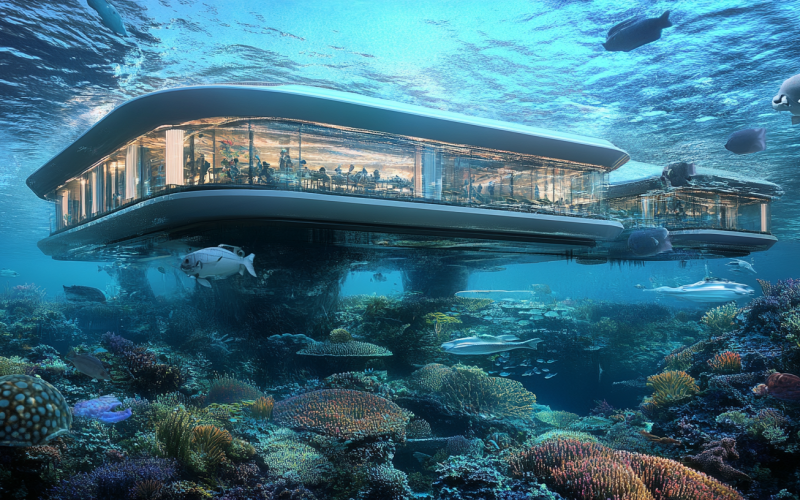Envisioning how humans might live in the future stretches our imagination to the furthest reaches of space and the mysterious depths of our oceans. Innovations in technology and shifts in environmental and societal dynamics are crafting intriguing possibilities for future habitats, both in outer space and underwater. Here’s a glimpse into a future where humanity extends its living frontiers beyond traditional boundaries.
Space Habitats
The prospect of living in space, once the domain of science fiction, is gradually becoming feasible. As agencies like NASA and private entities like SpaceX make strides in space exploration, the idea of space habitats is evolving from theoretical models to planned implementations. These habitats could range from orbital stations to bases on the Moon or Mars.
Orbital Living: Future space stations might serve not only as research hubs but also as homes for astronauts and possibly civilians seeking the experience of living in orbit.
These habitats will likely be equipped with life-support systems that recycle air and water, while food might be supplied through a combination of shipments from Earth and hydroponic gardening within the station.
Lunar and Martian Bases: Establishing bases on the Moon or Mars involves creating environments where humans can live for extended periods. This means developing structures that can shield inhabitants from cosmic radiation and extreme temperatures, utilising regolith-based building materials available on the lunar and Martian surfaces. Solar energy will be a vital resource, powering these habitats and supporting the life systems needed to sustain human colonies.
Underwater Living

Equally fascinating is the concept of underwater living. As surface space becomes scarce and the allure of the ocean’s mysteries grows, underwater habitats could become viable alternatives for scientific, military, and possibly even residential purposes.
Research and Conservation Stations: Underwater stations can provide scientists with direct access to marine environments, facilitating crucial research on marine biology, underwater ecosystems, and climate change. These habitats could be powered by tidal and wave energy, making them self-sustaining. As these types of habitats are currently in development by www.deep.com, underwater living could soon be with us.
Submerged Cities: Technological advancements might one day allow for the development of submerged cities, where people live in large pressurised structures with conditions similar to surface living. These underwater cities could feature transparent domes that offer panoramic views of the oceanic life, combining the necessities of human habitation with the beauty of marine environments.
Technology and Lifestyle in Future Habitats
Living in space and underwater will necessitate technological innovations across various domains:
Transportation: Efficient transport systems will be crucial. In space, compact spacecraft powered by advanced propulsion systems will shuttle between habitats and Earth. Underwater, specialised submersible vehicles will facilitate travel between surface and submerged habitats.
Communication: Maintaining robust communication systems will be essential for safety and psychological well-being. Optical and quantum communication technologies could provide high-speed, secure communication channels for space and underwater habitats.
Sustainability: Closed-loop ecological systems will be crucial for air, water, and waste recycling in both environments. These systems will mimic Earth’s natural ecological cycles to support life independently from the planet’s surface resources.
Social Dynamics: The confined and isolated nature of space and underwater living will require new forms of social management and recreational activities to maintain morale and mental health.
Conclusion
The future of human living in space and underwater represents a blend of challenges and high-tech solutions, offering exciting opportunities for extending the boundaries of human habitation.
As these extreme environments become more accessible through technological advancements, they may not only serve as new frontiers for exploration but also as vital alternatives for sustainable living amidst Earth’s environmental and spatial constraints. The future of how we live could be as boundless as our innovation and ambition allow.





